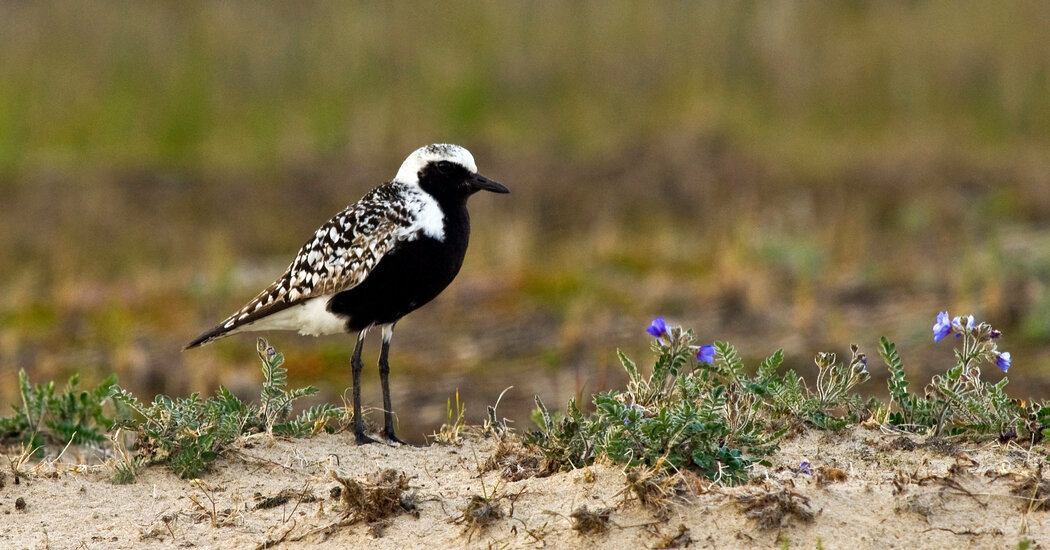Scientists say they have observed one of the highest-altitude acts of bird predation ever recorded.
In January 2023, scientists attached tracking devices to eight grey plovers on the coast of the Wadden Sea off the Netherlands. The hope was to learn more about the birds’ yearly migration to breeding grounds in the Arctic. And all was going well until late May, when one of the birds started acting strangely.
“The first thing we noticed was a sudden change in direction,” said Michiel Boom, a migration ecologist at the University of Amsterdam.
While the rest of the plovers headed northwest, this bird started going southeast. In fact, the bird appeared to have rapidly descended before landing in a rock quarry — a very unusual destination for a grey plover.
Soon after, the bird’s tracker stopped moving. It had become clear that this was not a bird with a confused sense of direction: The plover had met its end in the talons of a predator.
Dr. Boom remembers becoming overwhelmed with disappointment.
“You put a lot of effort into putting these trackers on the birds, and you want to get information from the breeding grounds,” he said. “So at that point, we were just mostly sad about the fact that we lost one bird.”
But then a closer look at the data revealed something curious — whatever happened to the plover, the tracker’s GPS revealed that it happened at 9,455 feet above the ground. Starting from approximate sea level, that’s much higher than the altitude birds of prey are known to hunt at.
